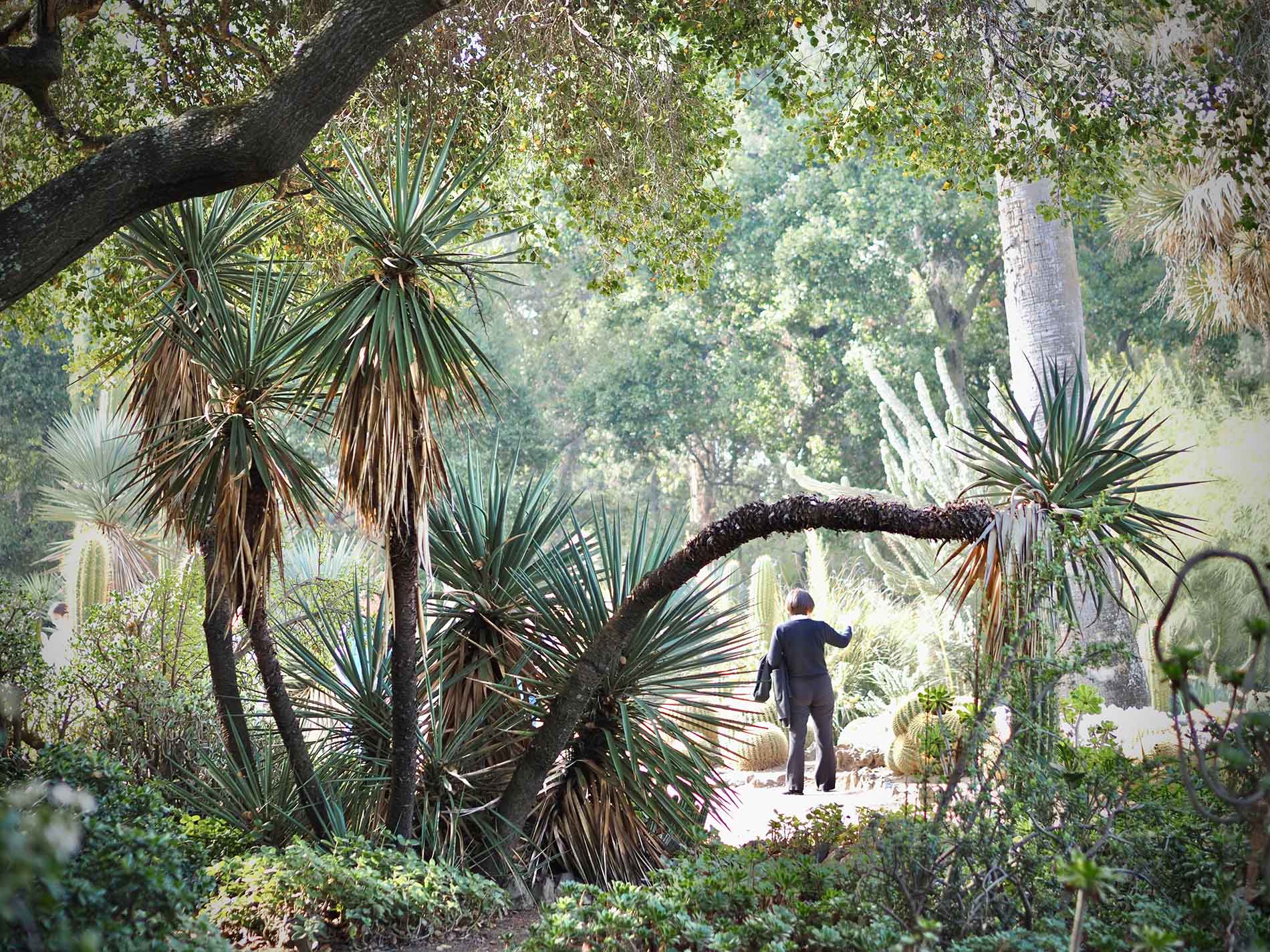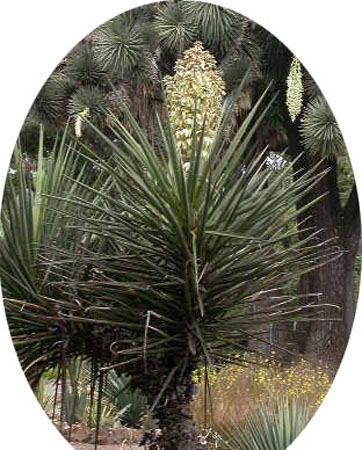Yucca schidigera
 Mojave yucca
Mojave yucca
A group of Mojave yucca grows near the Arizona Garden’s center, under the north edge of the canopy of the large coast live oak. Another is a couple of beds to the east of it.
Arborescent, rigid and sharp-pointed leaves. Unlike Y. schottii, has convexo-concave, often twisted leaves, with distinctive coarse, marginal curled filaments. Leaf color varies from blue-green to dark green, and leaf surface from smooth to rough. Leaf length varies from 1.5–3+ feet. The inflorescence, up to 3 ft long, is mostly within the leaves. Its bracted (bracts up to 4 inches long and 1 in. wide), foot-long branchlets (apr. 20 per peduncle) each bear a dozen pendant, flowers, single on up to 1-inch-long pedicels. Each flower has its own small bractlet. Waxy, whitish, campanulate tepals, often maroon-tinted, 1.5–3+ inches long, not joined at their bases, or barely so. One Arizona Garden individual displayed both young fruit (green, 1.5 in. long) and flowers April 15, 2003. Wilson (1938) reported Y. schidigera in the Stanford Experimental Garden before 1915. (Albert Wilson (1938) Distintive Trees, Shrubs, and Vines in the Gardens of the San Francisco Peninsula.)
It is native to Southwestern California (San Diego Co.), S Mojave Desert, NW Sonoran Desert.
Name derivation: Yucca – Haitian: yuca, or manihot, because young inflorescences sometimes roasted for food; schidigera – from the Latin meaning "bearing a splinter of wood," alluding to the coarse marginal fibers at the edge of the leaf blade [from California Plant Names].
About this Entry: John Rawlings authored/updated the text ca. 2005–2013. Locations added (Dec 2024, SP).





